Predated Mallard nest
A couple of days ago I posted about three different types of ground nest. One of these nests I posted about was a Mallard (Anas platyrhynchos) nest one of the kids I was hanging out with had found. Today we went back to this nest to see if there was any signs of the young ducklings in the area. When we arrived the scene looked quiet and the cover of sticks were slightly displaced giving a little bit of a clearer view into the nest. I passed off my monocular to one of the children and asked them to look through while I snuck in for a closer look, asking them to alert me if they see any movement from the nest so I could stop and retreat before I pushed the hen off her clutch.
As I got closer I noticed that the hollow where the nest was hidden was now more open and that the downy edge of feathers where the eggs were previously, had been dragged/pulled or been kicked out from where it had made a tidy ring before. I also noted that the nest was empty so I called the kids over and we began examining the nest closer.
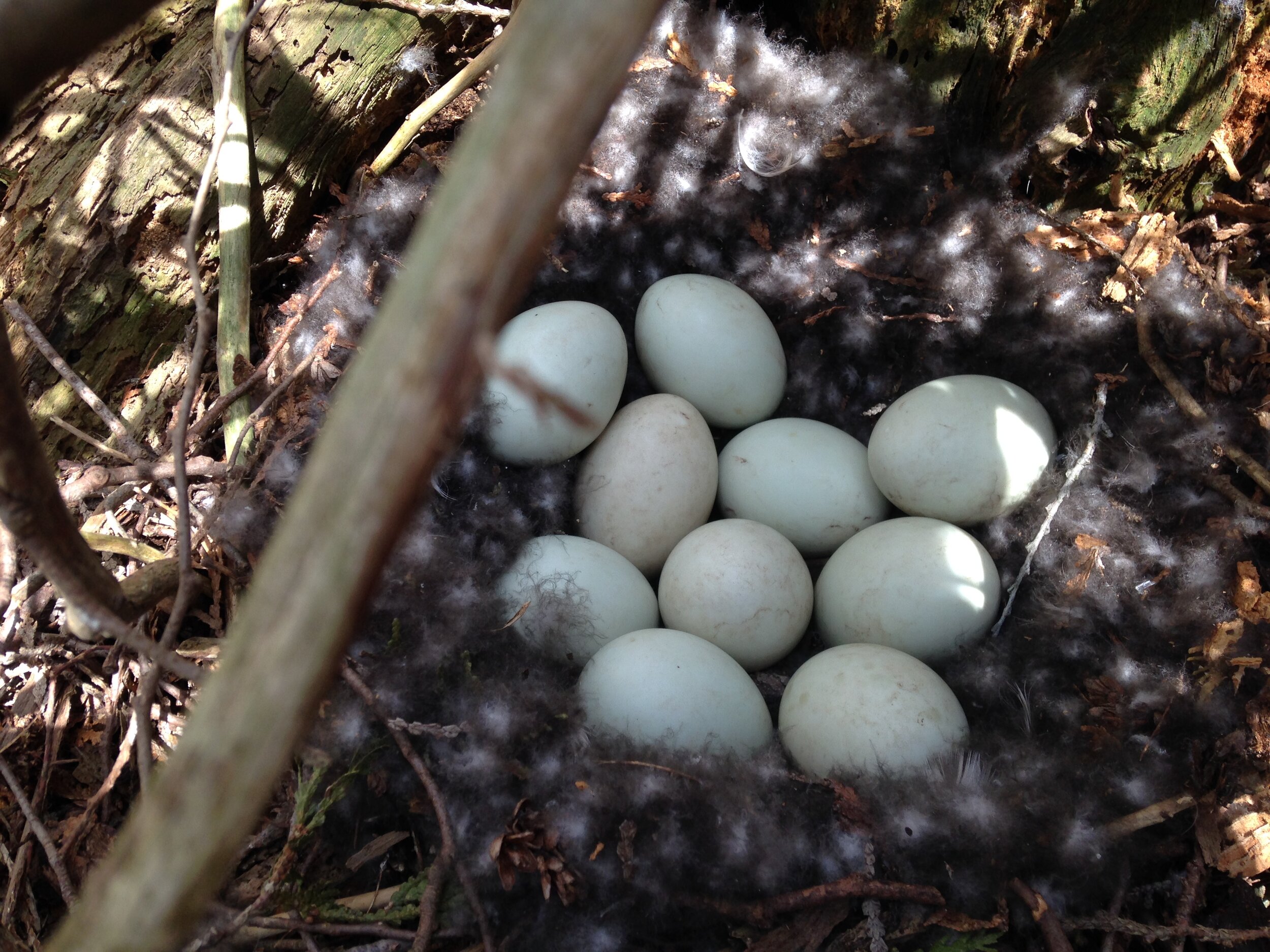
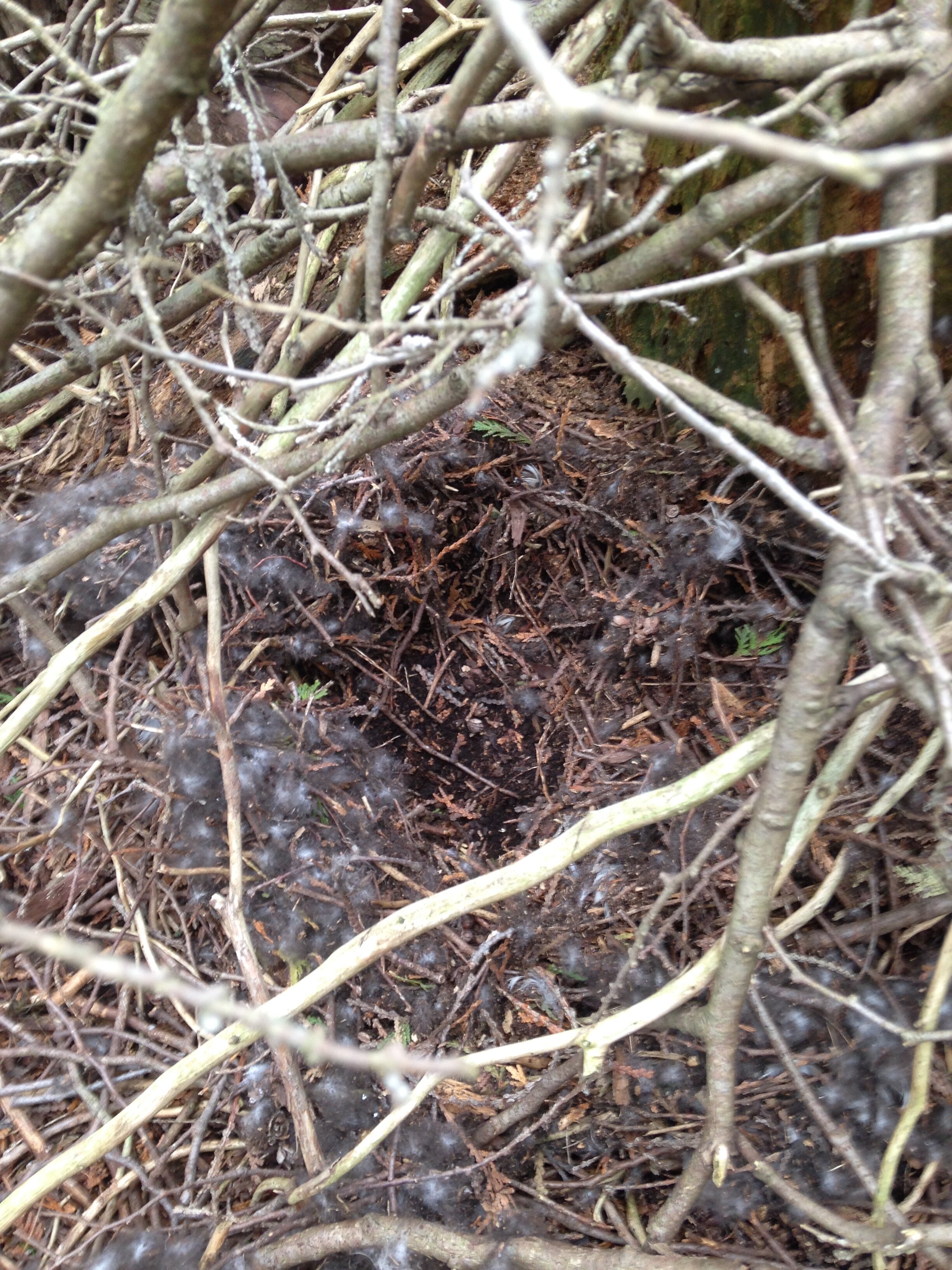
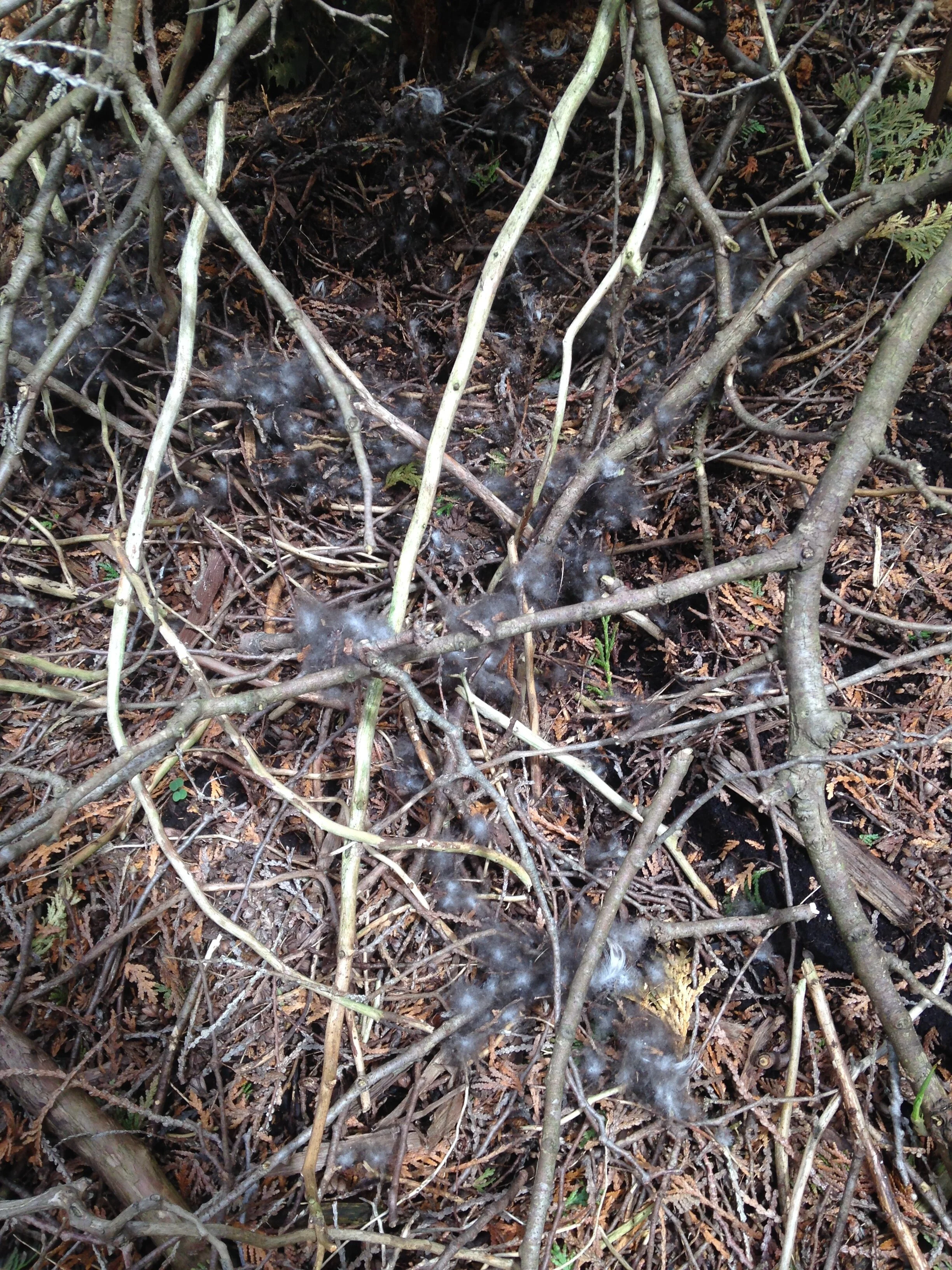
We circled the nest and the tree that the nest was at the base of and the two kids who were with me began to notice egg shells spread around in a circle about 2.3 meters in circumference (center point being the nest). These eggs showed different patterns of entry and destruction. Some eggs were closer to the nest, and some a little further out.
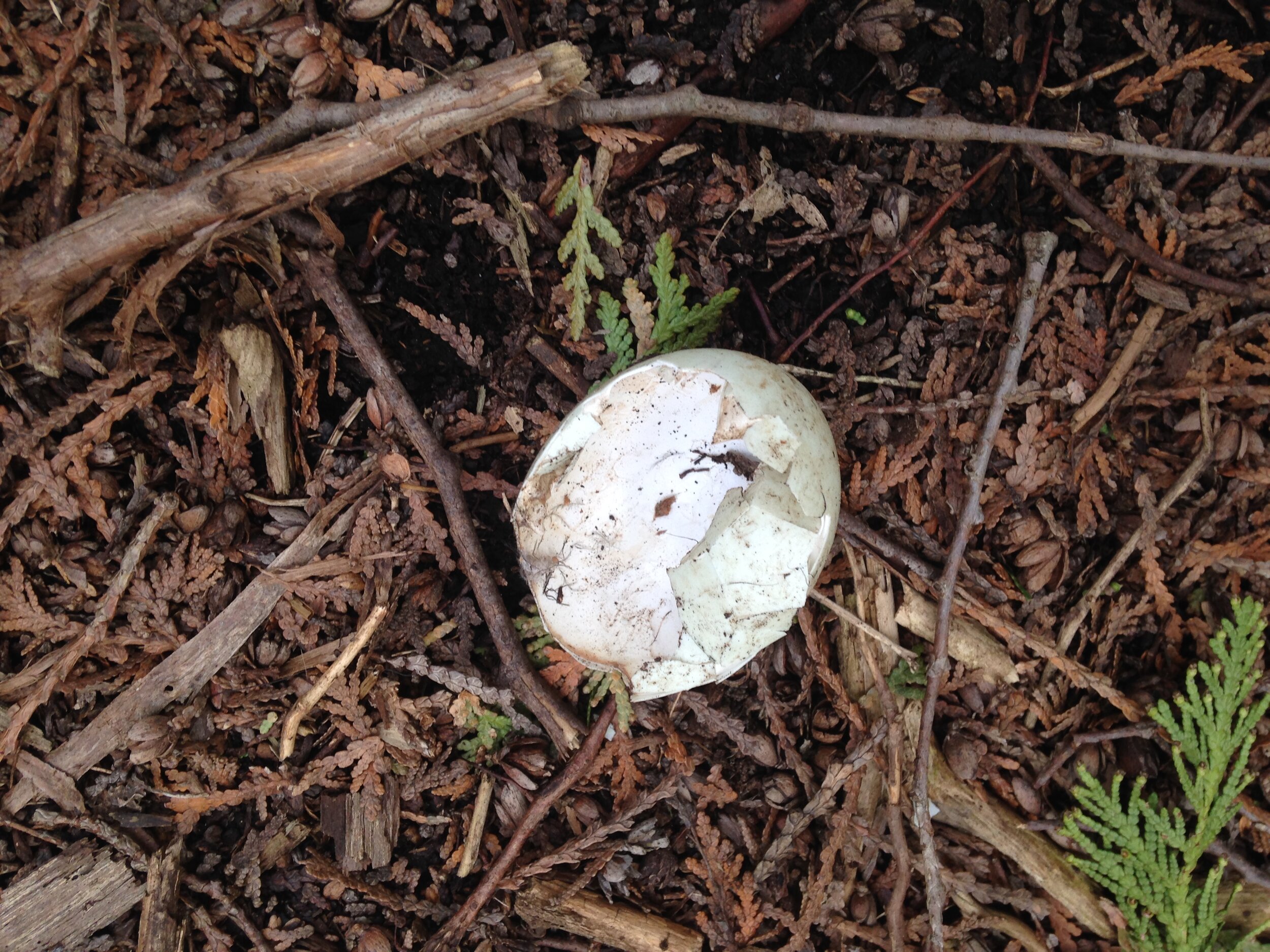
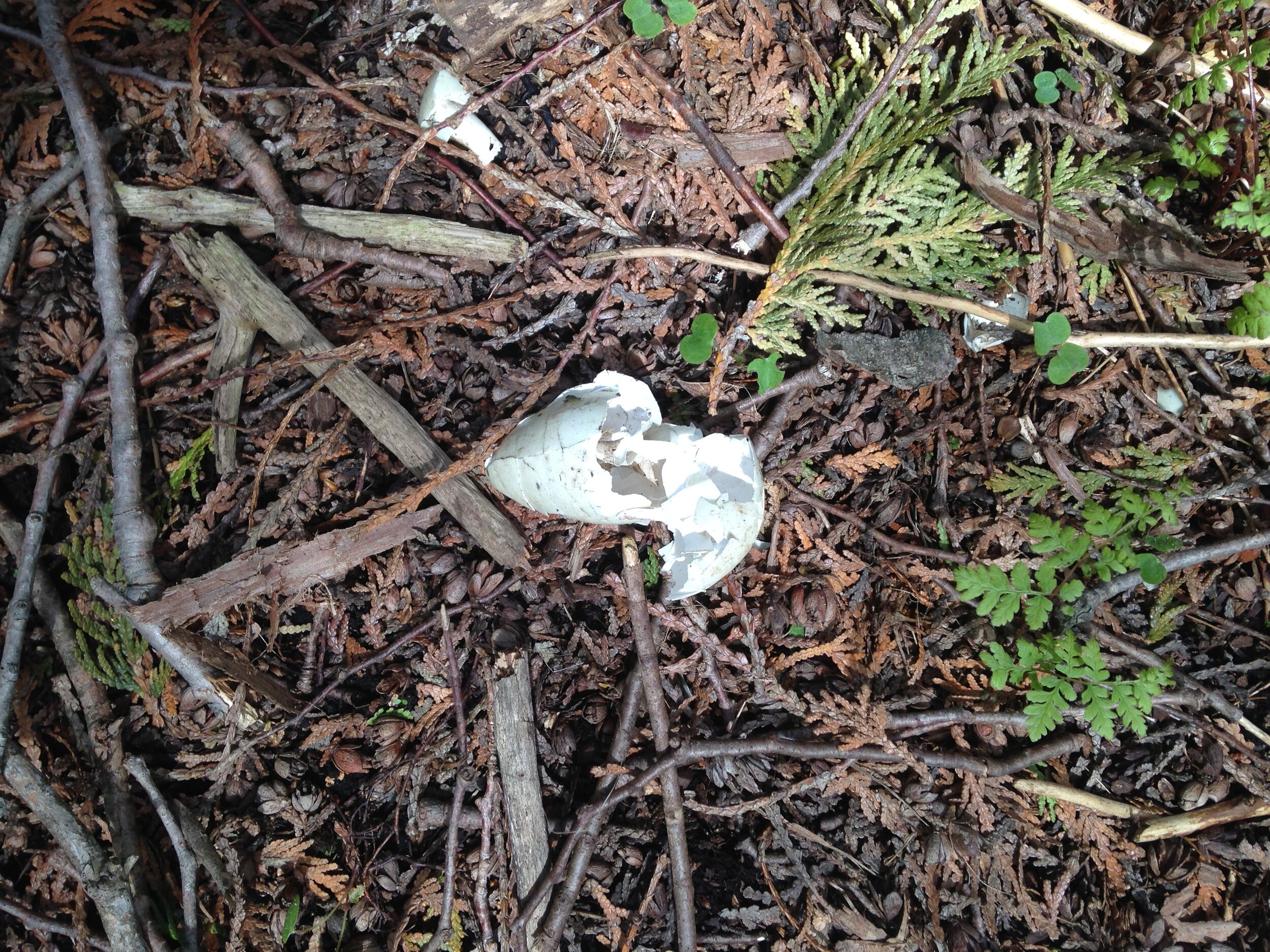
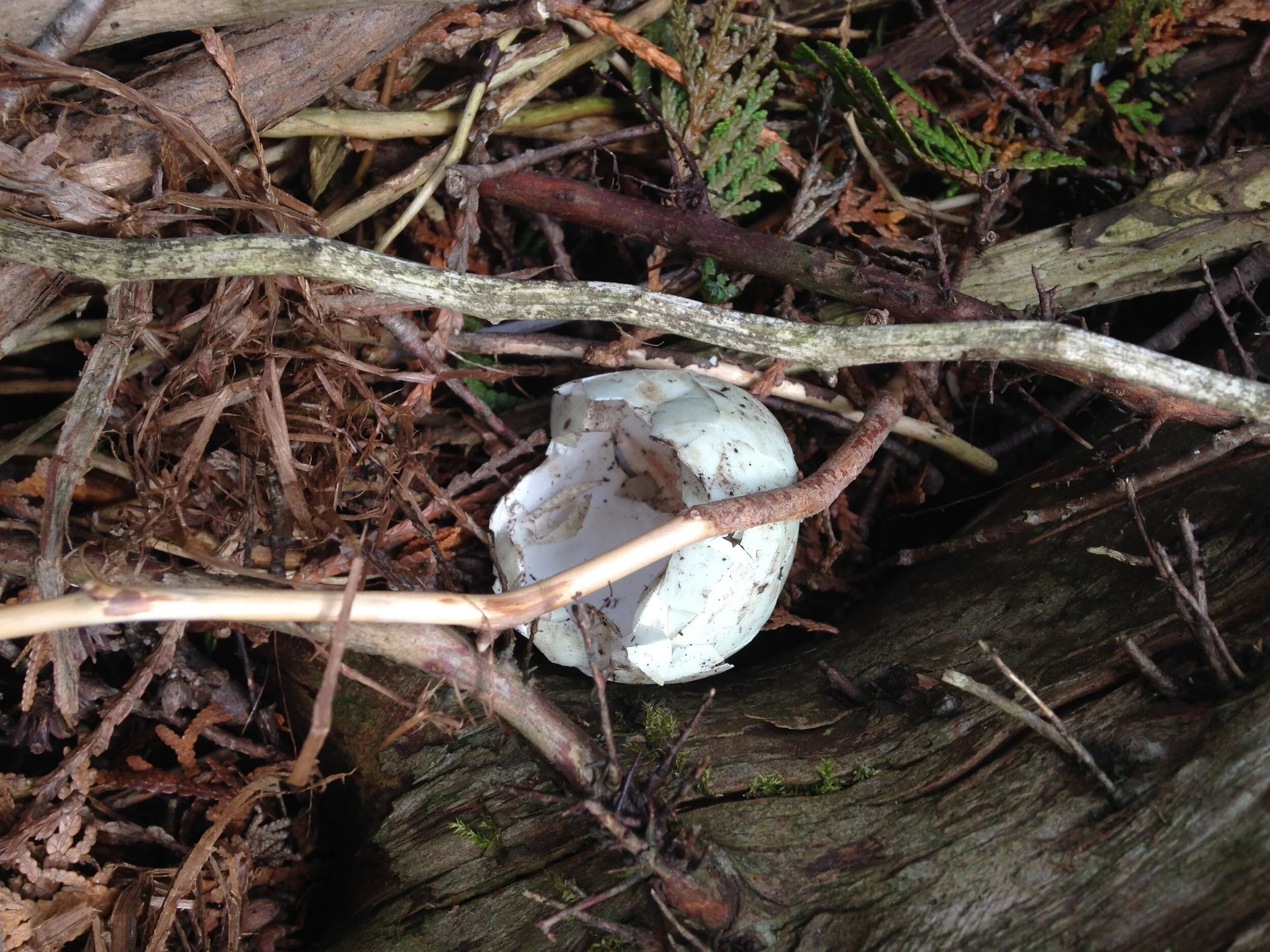


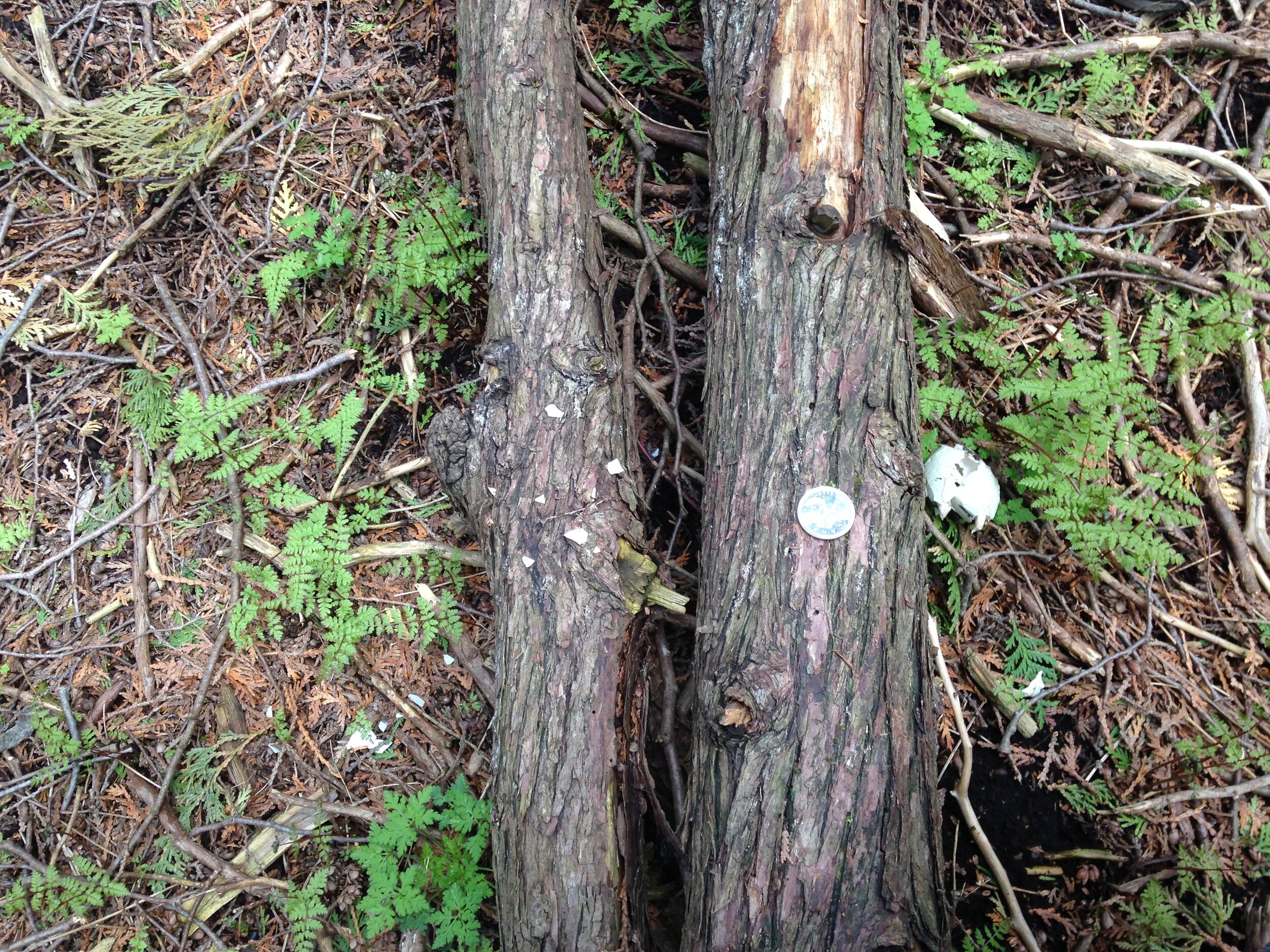
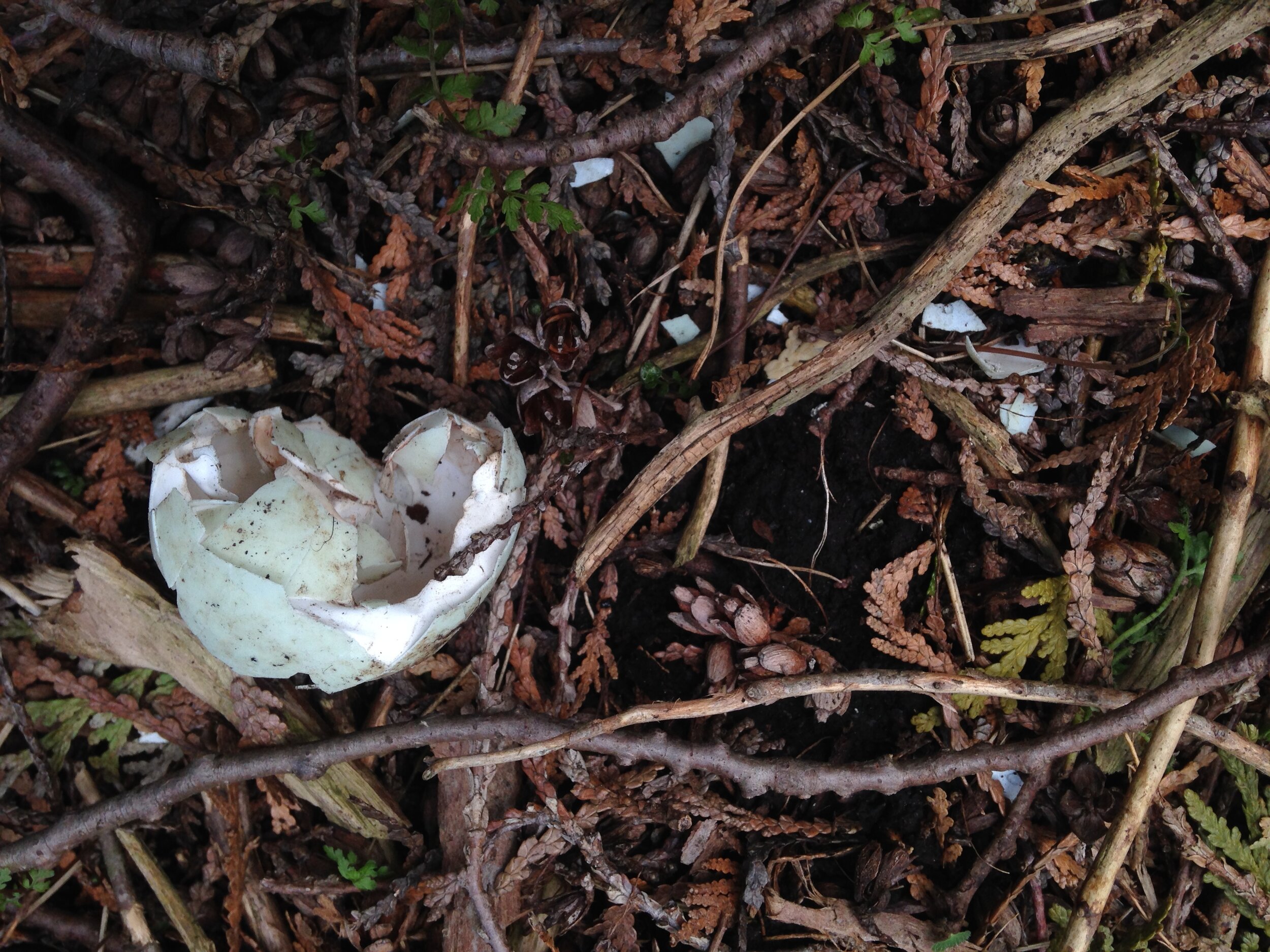
We began collecting some of the egg remains and took measurements of what appeared to be marks where the animal took the egg into their mouth, either for transporting the eggs or in the process of eating the contents. Measurements we about 25 mm across and had a distinct U-shape.
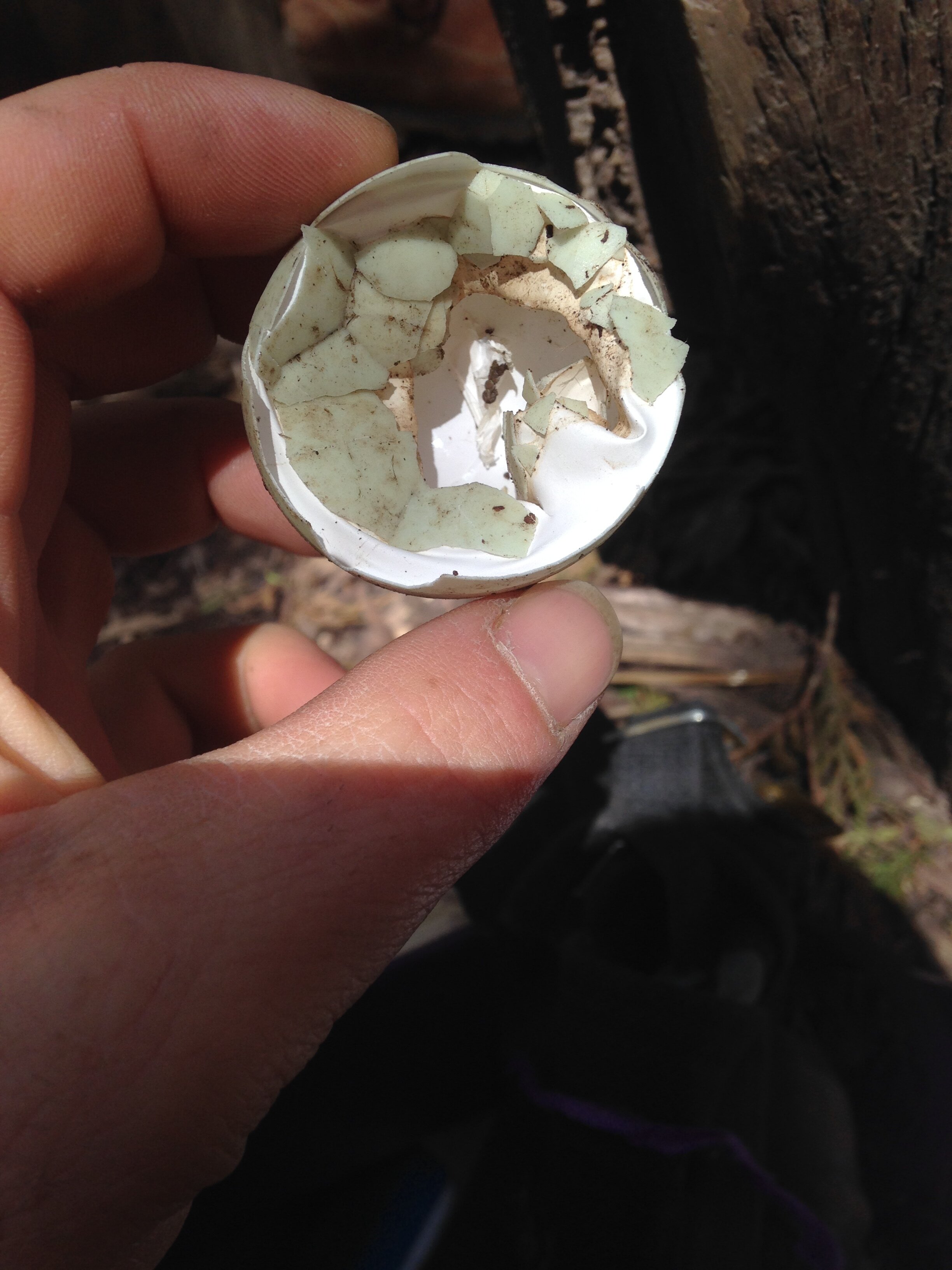

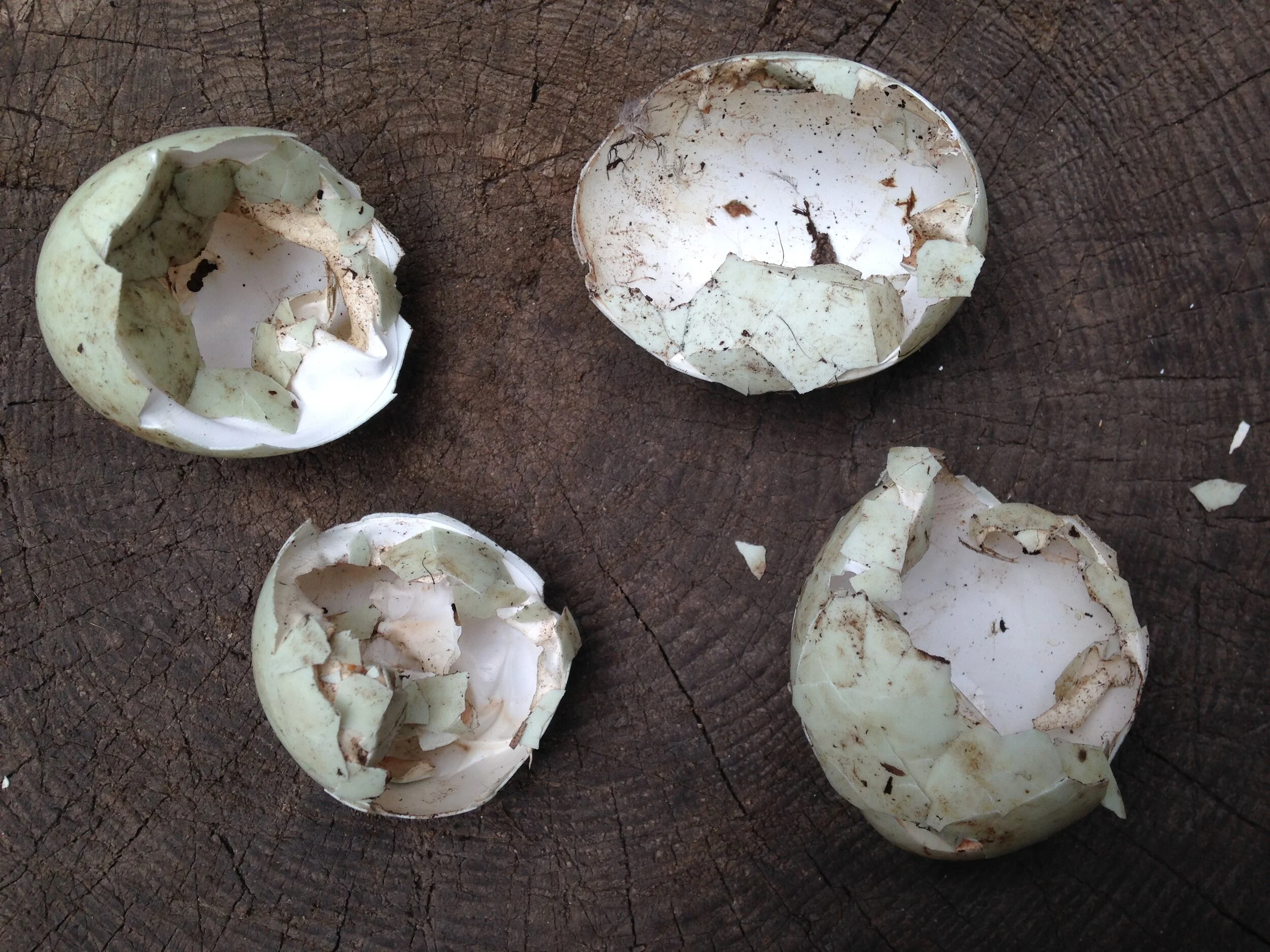
One egg appeared to be pushed in, as if a predator had rammed their face into the shell to remove whatever contents remained, while other eggs were too broken down to provide clues to a group of novice trackers (but I guess that is a clue in and of itself). We discussed possible predators and came up with a top two guesses of Raccoon (Procyon lotor) and Long-Tailed Weasel (Mustela frenata) based on the 25 mm measurement, animals we knew who occupied the forest and who might be predating on Mallard eggs. In retrospect, and for the future I would include a Striped Skunk (Mephitis mephitis) in the running for the predator.
When I got home I measured some of my Raccoon skulls as Raccoon was my first guess and the measurements between the upper canines averaged out to 25 mm for an older Raccoon. I measured Striped Skunk as well and the larger specimen I have came out to about 15 mm between the upper canines. I can’t take Long-Tailed Weasel skull measurements because I don’t have access to a skull to measure, but Mark Elbroch’s book Animal Skulls, offers a greatest distance between upper canines measurement for Long-Tailed Weasel being 9.03 mm.
Measuring the distance between the upper canines on a specimen in my collection.
In Mark Elbroch’s second edition of Mammal Tracks and Sign, with contributions from Casey McFarland (listen to an interview I got to do with Mark about the book here), he includes additional information detailing Raccoon predation;
Raccoons won’t kill the nesting hen
Tend to leave the nest mostly intact but may displace up to 10% of nesting materials
Will leave lots of eggshells on site near the nest
Shapes of holes in the egg include large oval or jagged misshapen hole, and sometimes Raccoons will crush the entire egg
The holes are located at the side or ends of the eggs. “If more than 50% are opened on the end, good indicator for Raccoon.”
All of the above points were valuable in confirming Raccoon as being the predator at the site of the Mallard nest.
I have trailed Raccoons to predated Ruffed Grouse nest in this same forest in years past (also mentioned in the post on ground nests) and I believe this to be the same situation.
I want to write about this, not only because it helps me remember the details, but also because I have found in difficult in previous years to identify nest predation and want to contribute to a body of knowledge in hopes we can all learn more and be able to identify it better as we come across these events out on the land.
Thanks for reading.

